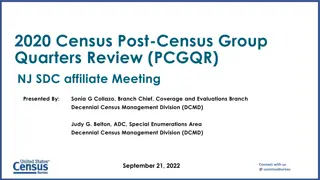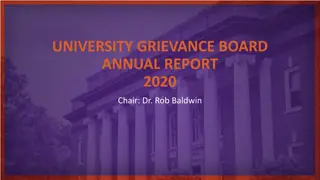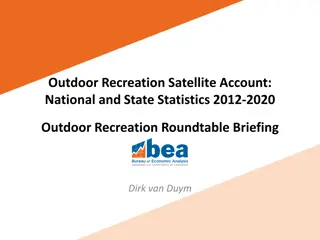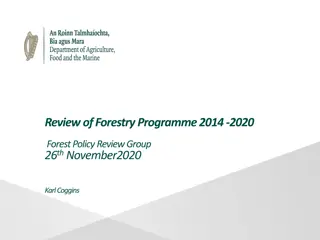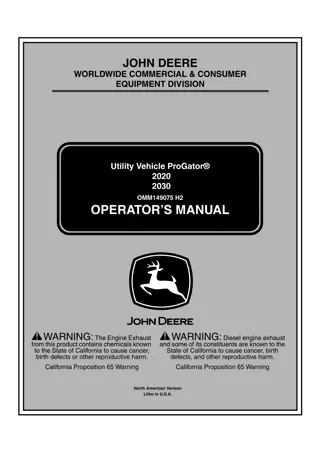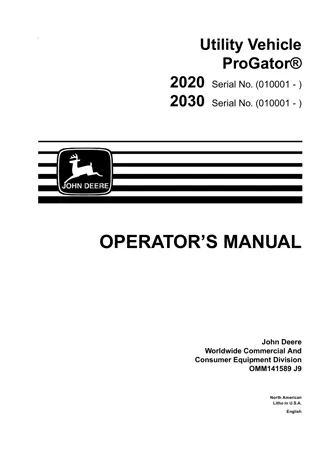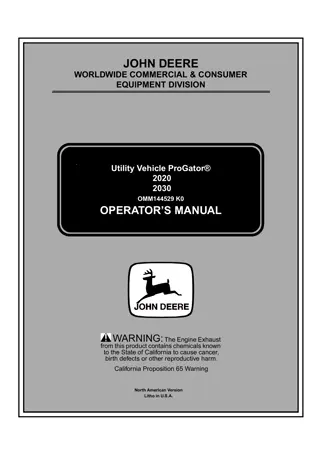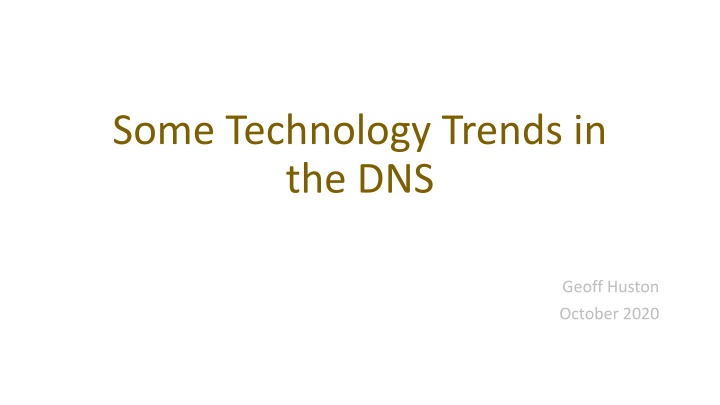
Insights into DNSSEC Implementation and Management
Explore the complexities of DNSSEC implementation, including the need for digital signatures, validation processes, and registry tasks. Discover how DNSSEC enhances security in the DNS ecosystem amidst common interception and rewriting challenges.
Download Presentation

Please find below an Image/Link to download the presentation.
The content on the website is provided AS IS for your information and personal use only. It may not be sold, licensed, or shared on other websites without obtaining consent from the author. If you encounter any issues during the download, it is possible that the publisher has removed the file from their server.
You are allowed to download the files provided on this website for personal or commercial use, subject to the condition that they are used lawfully. All files are the property of their respective owners.
The content on the website is provided AS IS for your information and personal use only. It may not be sold, licensed, or shared on other websites without obtaining consent from the author.
E N D
Presentation Transcript
Some Technology Trends in the DNS Geoff Huston October 2020
Three broad topics: 1. DNSSEC 2. DNS Privacy 3. Other Stuff
1. DNSSEC Why? How can you believe what the DNS tells you? You can t! DNS interception and rewriting is common these days Clean Feed DNS resolvers NXDOMAIN rewriters DNS 6to4 rewriters And then there is hostility Glue attacks (Kaminsky attack) Fragmentation attacks
1. DNSSEC How? Add a digital signature to the entries in the DNS zone Provide the signature along with the resource records in the answer Validate the signature before using the response data
1. DNSSEC Who uses it? Add a digital signature to the entries in the DNS zone Provide the signature along with the resource records in the answer Validate the signature before using the response data Those who do it Those who do it a little
1. DNSSEC Who uses it? Add a digital signature to the entries in the DNS zone Provide the signature along with the resource records in the answer Validate the signature before using the response data Those who do it Those who do it a little
1. DNSSEC - Registry Tasks DS record alongside delegation NS records Potential use of CDS automated DS tracking from child zone Zone management All-of-Zone signing or dynamic signing? Sync of secondary servers Using multiple secondary service providers and dynamic signing Key Management Algorithm choice Key rollovers Server Management DNS Response Sizes will grow: UDP configuration TCP capacity Large Packet Handling
1. Why Not DNSSEC? Validation is time-expensive Unravel the delegation chain to reproduce the DS/DNSKEY linkages and validate them Resolution is slower Large responses can be a LOT slower if the DNS needs to kick into TCP to retrieve key records Its another point of vulnerability Poor key management Poor management of big DNS responses End users don t validate! All that effort and no actual protection for end users!
1. DNSSEC has no Use Case! DANE is a failure! As long as 75% of user site behind non validating DNS resolver systems and 99.9% of users don t directly validate DNS responses then we cannot place critical information in the DNS in a secure fashion and expect everyone to be protected by DNSSEC No natural market-based incentive for deployment Which means that Internet security is a failure as well!
2. DNS Privacy EVERYBODY peeks at the DNS Because everything you do online is exposed to the DNS And the DNS is promiscuously chatty it over-exposes information DNS query logs are collected, packaged and sold as user profile intel How can we make the DNS less chatty?
2. Privacy - Resolver Behaviour and Qname Minimisation Stop over-asking Trim the query name to match the scope in the zone you are querying for Terminal label query data is only exposed to the zone server that contains the terminal label Implementations are approximate Qname minimisation typically is used for the first three labels and then full name is used thereafter
2. Not Privacy - EDNS(0)Client Subnet DNS does not expose the end user beyond the first recursive resolver But the DNS is used by a number of CDNs for content steering The rise of open recursive resolvers increased the distance between the user and the resolver which impacted the accuracy of the DNS- based content steering mechanisms Add a client subnet to the DNS query which is passed across recursive resolvers Massive privacy leak Negative impact on caching performance
2. Privacy - DNS Channel Encryption Stub to Recursive solutions DNS over TLS (DoT) Replaces UDP and TCP between stub to recursive with TLS/TCP Supported on current Android platforms Readily blocked (TCP port 853) TLS 1.3 with ECH still some time away, so the SNI is still in the clear Adds TCP overhead to recursive resolvers (reduces query capacity by around 2/3 at least) Used as a platform tool DNS over HTTPS (DoH) Uses DNS with HTTP framing over TLS/TCP Supported on Firefox browsers Uses TCP port 443 Similar TCP overhewad Used as an application tool
2. Privacy - DoT implications Not that many Queries and responses are now in a cloaked TLS wrapper, but its little different to DNS as we knew it It probably won t take off It requires users fiddling with the knobs and users don t fiddle on the whole
2. Privacy - DoH implications Allows an application to create its own DNS name resolution context No visibility on the part of the user, the platform, other applications Which implies that applications can operate in their own application-specific name space Server push resolverless DNS where the application is primed by a server with DNS response DoH is NOT secured content its just secured transit People can still lie in the DNS, but now the lie is all but invisible
2. Privacy - Recursive to Server Privacy Unclear why this is necessary or even useful Once you ve shared all your DNS with Google, there is nothing left to see in the path from 8.8.8.8 to the auth servers! And if you are running your own recursive resolver then getting servers to deal with encrypted sessions seems like a out-of-all- proportion solution to the privacy problem
3 others: IDNs Unicode has just one purpose, and that purpose is NOT to encode DNS labels! The DNS is largely a what you see is where you are going model It relies on the property that this is only one way to encode a visible sequence of displayed character glyphs This is true in ascii Its not true in Unicode by design IDNs may be good for a laugh but it s almost impossible to use in a secure and reliable manner
3 others:DNSAbuse Moves to replicate the measures for self-regulation in the DNS industry that parallels self-regulation in the banking industry But without oversight, without reporting, without legal framework of enforcement And it doesn t work for the banking industry in any case! DNS registrars and registries are expected to use service contracts that define acceptable use and enforce these contracts in their (paying) customers Unlikely to be successful in reducing the levels of criminal activity in the Internet Never mistake motion for progress some Roman dude a couple of thousand years ago
3 others: DNS Fragmentation A perennial topic in name circles DoH has added a new breath of life to this discussion by lifting the name space out from common infrastructure to application attribute
3 others: DNS Flattening Noone really wants to be buried.down.deep.in.the.dns.underneath.some.one.elses.names They all want to be .myname The role of the hierarchies in the name space is under constant erosive pressure, and as the top level name space continues to be opened up the price premium of being in the top level drops It produces an increasing tension between the operators of the tlds and the root zone itself.
3 others: Its not about us any more We have constructed a DNS name infrastructure because we humans communicate using natural languages But silicon is multiplying at far higher rates than human populations And the DNS is a universal signalling and tunnelling protocol So its pretty logical that the DNS becomes a command and control mechanism of devices, and the residual human use sector becomes an increasingly esoteric luxury good business The high level of manual handling of DNS names (and cost) during the DNS name lifecycle is unsustainable in the shift from human to automated use Which implies that the current high touch business models of the DNS are close to end-of-life and the new model of crypto-generated bulk names and fully automated instantiation and use are coming Think of the the DNS as the new HTML it s a command and control micro-code language and no longer a distributed database of words intended for human-use
3 others: Not the DNS any more? Search terms as the new name space? Handles? Name Based Networking the DNS as a name space but not a resolution protocol

